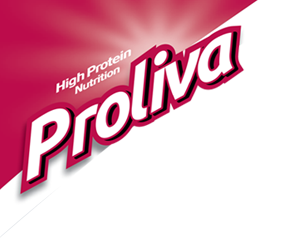-
Dietary Fiber Is the Real Macronutrient You Need
10.10.2018Proponents of plant-based diets often have their protein intake judged by outsiders who claim the vegan diet can’t provide nearly enough protein to sustain a healthy lifestyle. But it turns out that protein is not really the concern.
Most experts, including Kathy Freston and Bruce Friedrich, authors of “Clean Protein,” agree that if you’re eating enough calories, you’re getting enough protein. That said, there is one nutrient most Americans aren’t getting nearly enough of: dietary fiber.
There are three macronutrients, all of which you’ve certainly heard of: lipids (fat), carbohydrates, and protein. These nutrients make up the bulk of our diets and provide our bodies with energy.
While carbohydrates have been vilified (and even highlighted by some as “technically the only macronutrient your body can survive without,”) dietary fiber is actually a subset of carbohydrates and is very necessary for health.
What Does Dietary Fiber Do?
When most people think of fiber, they think, first and foremost, of regularity. But in reality, dietary fiber does far more than keep us regular.
Fiber is the portion of a plant-derived food that cannot be completely broken down by digestion. It then travels through the digestive tract undigested, becoming the food for all of the microbes that live there, also sometimes called a “prebiotic.”
As Mark Hyman describes it in his book, “Food: What the Heck Should I Eat?”, fiber becomes “fertilizer for the good bacteria that make up the internal garden in your gut.”
Dietary fiber is divided into two categories: soluble and insoluble fiber. The former dissolves into a gel-like substance in the digestive tract, while the latter stays mainly intact. Each brings its own health benefits to the table, with the latter contributing many of the digestive benefits and the former helping to decrease blood glucose and blood cholesterol, according to the Mayo Clinic.
High-fiber diets have also been linked to improved weight loss and even reduced mortality. One meta-analysis published in the American Journal of Epidemiology formed this link between high fiber intake and longer lifespan, and a recent study in The Journals of Gerontology, Series A: Biological Sciences and Medical Sciences found that those who consumed more fiber had an almost 80 percent greater likelihood of a longer life, with decreased risk for hypertension, diabetes, dementia, depression, and more.
How Can You Get More Dietary Fiber?
“For hundreds of thousands of years,” writes Max Lugavere in his New York Times bestselling book “Genius Foods,” “humans ate diets that were rich in fiber, with scientists estimating an intake of roughly 150 grams of fiber per day.”
Today, he continues, we consume an average of about 15 grams per day – quite a paltry intake, by comparison.
Ramping up your fiber consumption from 15 grams to 150 might seem like a daunting task, but never fear – it’s not one that most modern professionals would recommend. That said, experts are divided on how much fiber one should actually consume.
The Institute of Medicine suggests a daily dietary fiber intake of 25 to 38 grams per day, depending on age and sex, while the Dietary Guidelines for Americans suggests 14 grams of fiber per 1,000 calories consumed. For Dr. Robert Zembroski, a specialist in functional medicine, clinical nutritionist and author of “REBUILD,” however, both are still “far too low” for most people.
That said, data from Duke University shows that any more than 70 grams per day can have adverse effects on digestion, causing pain, cramping, or diarrhea.
The best way to figure out your own fiber threshold is to proceed slowly.
“The sudden addition of a ton of fibrous veggies can make a Western-adapted gut feel quite unpleasant,” says Lugavere. “If you’re eating the typically low fiber standard American diet, increase slowly by adding more salads and foods like garlic, onions, and leeks. You’re going to want your microbiome to adapt — indeed, you breed what you feed. So as your microbial ecosystem ramps up, flourishing under your new gut-healthy diet, you’ll be able to tolerate more fiber.”
The University of Michigan recommends adding about 5 grams of fiber to your diet per day to keep your digestive system from becoming overwhelmed.
To start things off, try adding some of the following fiber sources to your diet:
Soluble Fiber Sources
- Beans
- Lentils
- Oatmeal
- Peas
- Blueberries
- Apples
Insoluble Fiber Sources
- Brown Rice
- Wheat Bran
- Potatoes
- Tomatoes
- Cucumbers
While these lists will certainly get you off on the right track, there’s also no need to cherry-pick: eating a diet of whole foods featuring a variety of plants is a great first step to increasing fiber intake and improving health.
“To minimize confusion over the number of grams of fiber you consume each day, I recommend eating a wide variety of high-fiber foods,” says Zembroski. “By eating plenty of plant-based foods loaded with fiber, you will most likely exceed the antiquated recommendations.”
Source: http://www.organicauthority.com/stop-worrying-about-protein-dietary-fiber-is-the-real-macronutrient-you-need-to-watch/
Latest Blog Post
- Sugary Drinks Linked to a Higher Cancer Risk
- The Latest Research on Protein and Muscle-Building
- 27 Health and Nutrition Tips That Are Actually Evidence-Based
- Tall order: More to good growth in toddlers than just measurements
- Millions of cardiovascular deaths attributed to not eating enough fruits and vegetables

